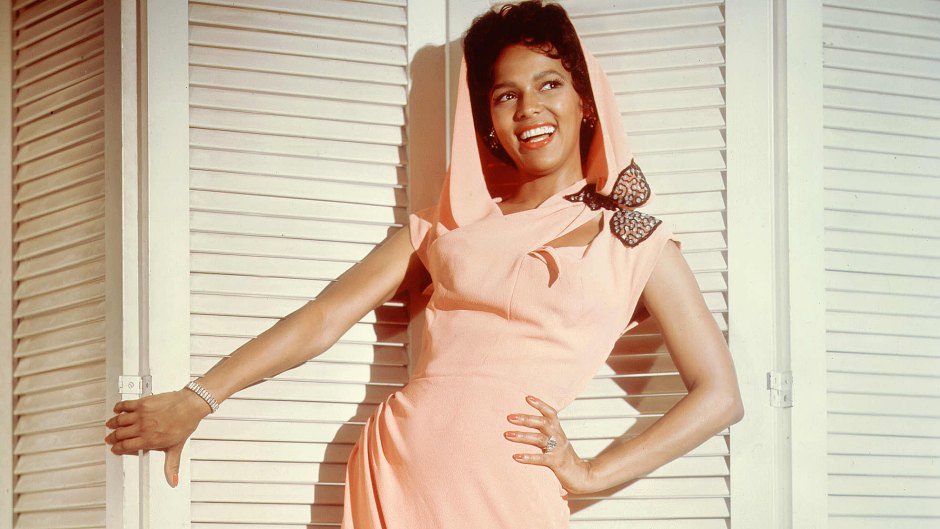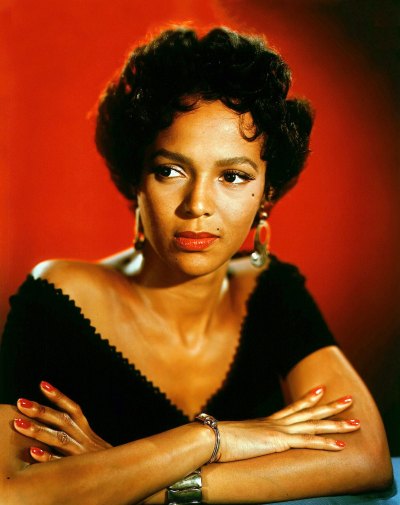
20th Century Fox/Kobal/Shutterstock
Inside Dorothy Dandridge’s Rise to Fame Amid ‘Self-Destructive’ Tendencies Before Her Death at 42
Camera flashes followed Dorothy Dandridge as she arrived at the Academy Awards ceremony in 1955 clad in a cream gown and a mink stole. The first Black woman to be nominated for best actress smiled as she took her place among fellow nominees Audrey Hepburn, Judy Garland, Jane Wyman and Grace Kelly, who would be the night’s winner.
With beauty, talent and a keen intelligence, Dorothy spent her life battling prejudice and kicking down doors. “She was one of the first African American entertainers to refuse to perform in hotels and casinos that would not admit Black people,” says William Schoell, author of Heartbreaker: The Dorothy Dandridge Story.
Despite the path she blazed, Hollywood never allowed Dorothy to live up to her full potential, and personal sorrows — including a child born with a mental disability and the overuse of prescription drugs — lead to her death at just 42.
After a youth spent performing on the vaudeville circuit, Dorothy and her sister, Vivian, became backup singers for Cab Calloway at New York’s Cotton Club. That’s where she met her first husband, dancer Harold Nicholas, but he was unfaithful, and their daughter Harolyn, whom Dorothy called Lynn, was born mentally disabled.
“It was a difficult birth … the baby was deprived of oxygen,” her sister-in-law Gerry Branton said. Dorothy never forgave herself. “After that, everything was self-destructive.” In New York City, she honed her nightclub act and endured dead-end romances with Rat Packer Peter Lawford and Harry Belafonte.
Wanting more out of life, she took classes at the Actors Studio, where Marilyn Monroe was a classmate. Even so, director Otto Preminger, who had seen Dorothy’s classy nightclub act, needed convincing to give her the role of a factory worker in Carmen Jones.
“I’m an actress. I can play a nun or a bitch,” Dorothy told him, according to her posthumous memoir, Everything and Nothing: The Dorothy Dandridge Tragedy. In Carmen Jones, Dorothy won raves, a cover on Life magazine and an Oscar nod.

“The sad thing is it really didn’t lead into what it should have,” says Schoell. It would be three long years before Dorothy was offered another starring role. “America was not geared to make me into a Liz Taylor, a Monroe, a Gardner,” Dorothy wrote.
In 1959, she wed nightclub owner Jack Denison, but their union was wracked by alcohol abuse and intense fighting.
Dorothy got out of the marriage only to weather more hardship when she lost her home and all her money in an oil company investment scam.
She was forced to send her daughter, Lynn, to a state institution when she could no longer afford private care. The actress’ death, from a mix of champagne and antidepressants in 1965, was deemed accidental.
“She kept saying, ‘If I looked like Betty Grable, I could capture the world,’” recalled Branton, who talked to Dorothy the night before her body was found.
The actress confessed she was lonely and sang the song “People” during the call. “Whatever happens now,” Dorothy told her, “I know you’ll understand.”




































